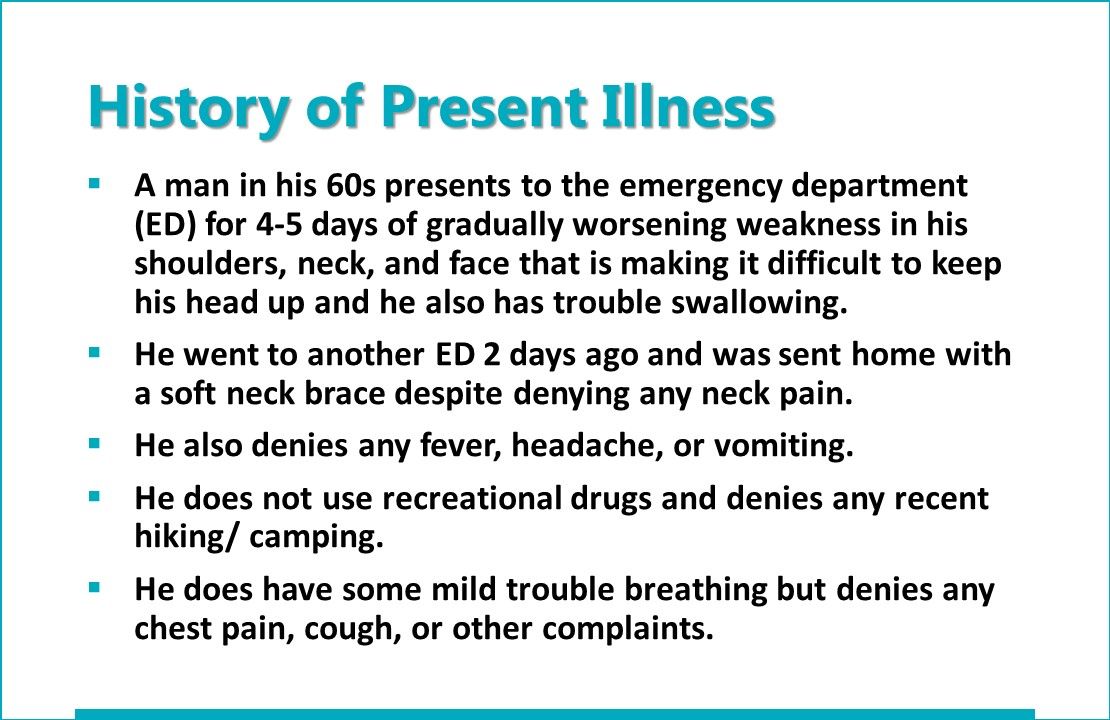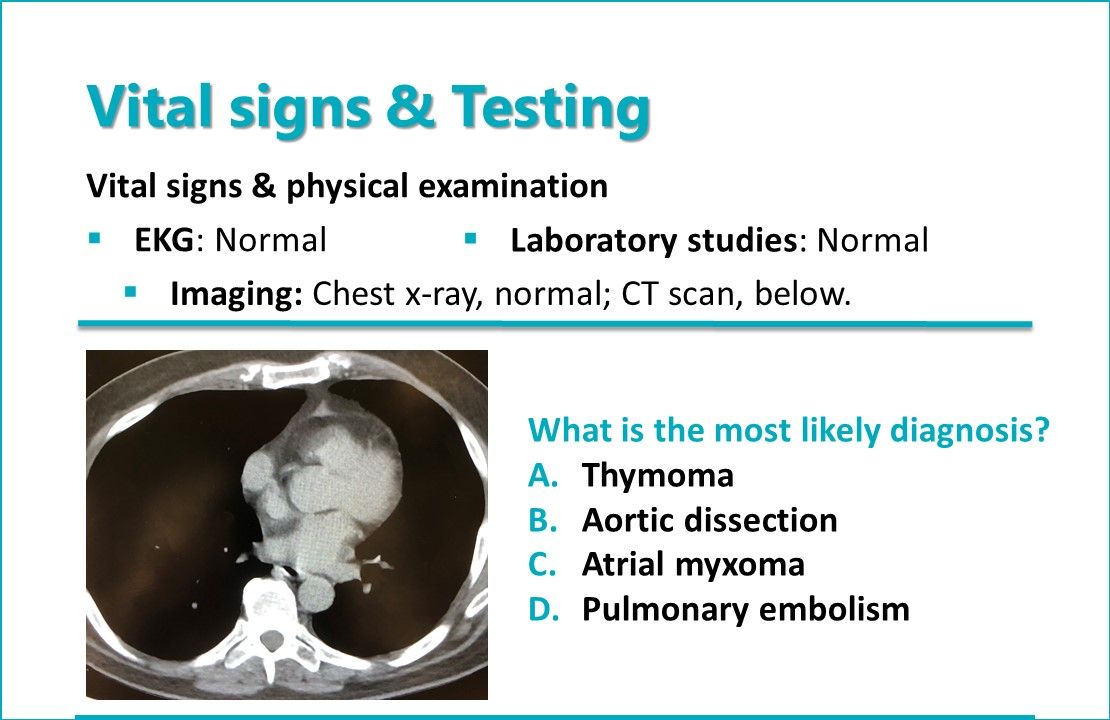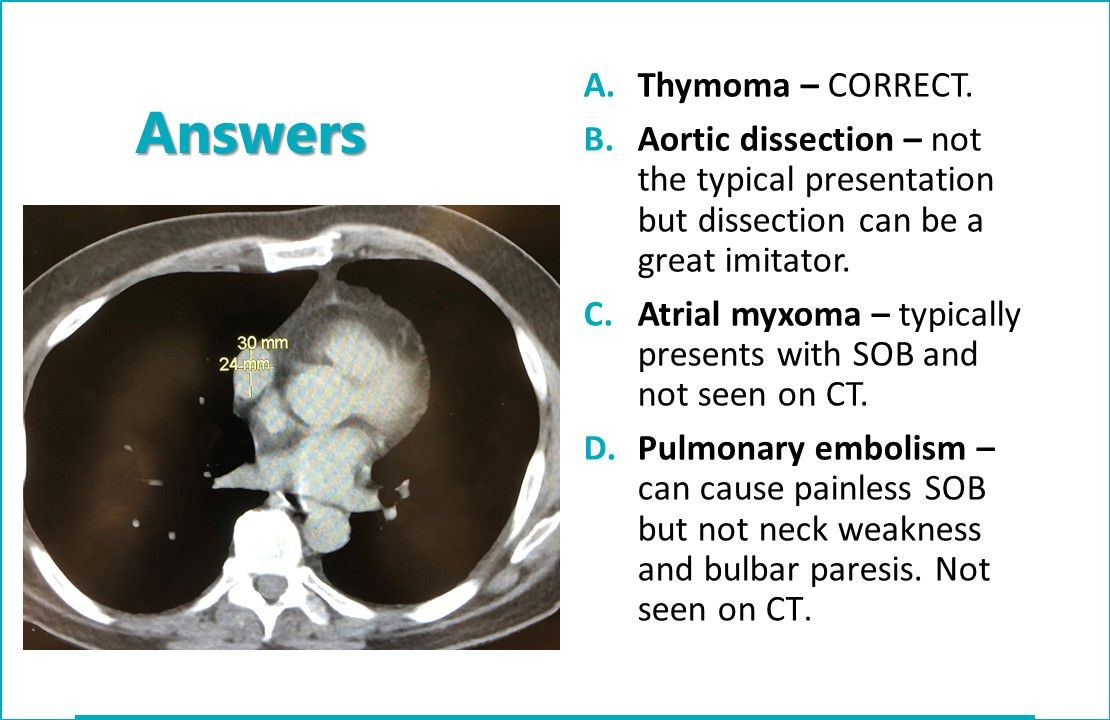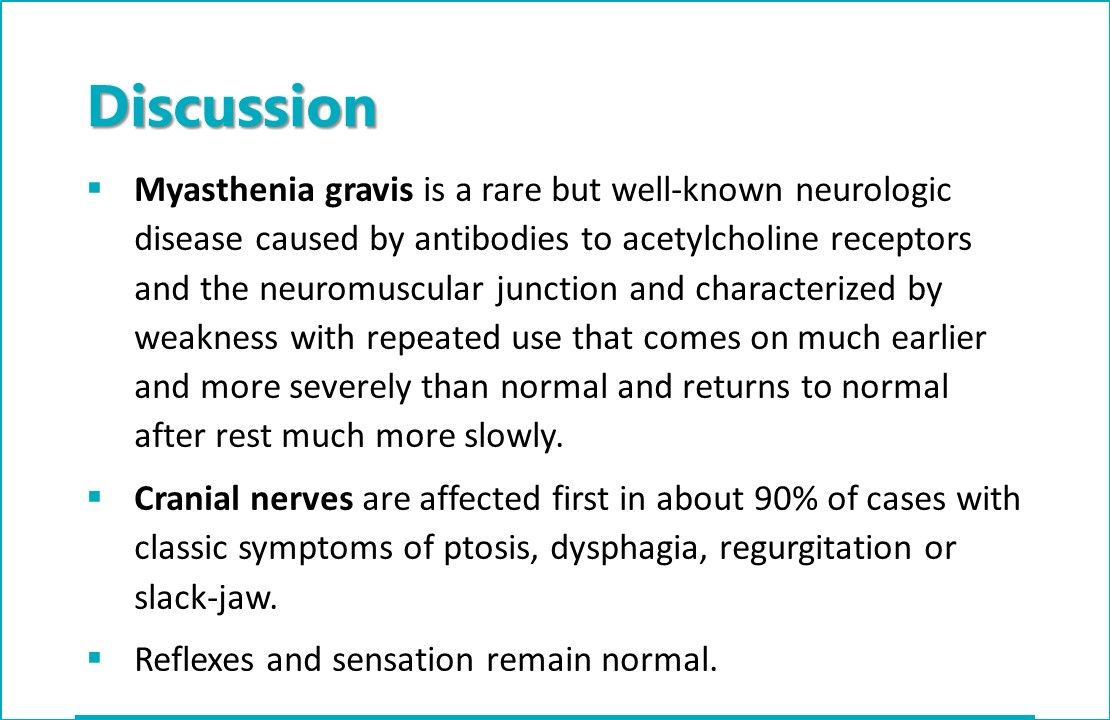© 2025 MJH Life Sciences™ , Patient Care Online – Primary Care News and Clinical Resources. All rights reserved.
Seen in the ED: Dysphagia & Floppy Neck
Gradually worsening weakness in the shoulders, neck, and face of 4-5 days' duration is the presenting complaint of a man in his 60s. ED physician Brady Pregerson, MD, asks, "What's your diagnosis?"

History of Present Illness. A man in his 60s presents for 4-5 days of gradually worsening weakness in his shoulders, neck, and face; he also has trouble swallowing. Another ED sent him home with a neck soft neck brace although he denied pain. He denies fever, headache, or vomiting. He does have some mild trouble breathing but denies any chest pain, cough, or other complaints.

Vital signs & Testing. ECG, laboratory studies, and chest x-ray are unremarkable. CT scan image presented above. What is your diagnosis?

Answers. A. Thymoma – CORRECT. B. Aortic dissection – not the typical presentation but dissection can be a great imitator. C. Atrial myxoma – typically presents with SOB and not seen on CT. D. Pulmonary embolism – can cause painless SOB but not neck weakness and bulbar paresis. Not seen on CT.

Discussion-myasthenia gravis. Myasthenia gravis is a rare but well-known neurologic disease caused by antibodies to acetylcholine receptors and the neuromuscular junction and characterized by weakness with repeated use that comes on much earlier and more severely than normal and returns to normal after rest much more slowly. Cranial nerves are affected first in about 90% of cases with classic symptoms of ptosis, dysphagia, regurgitation or slack-jaw.

Myasthenia gravis–Differential. Age at onset in women is usually before age 30 yrs and in men is usually after age 60. The neck is often also affected early, and severe forms can cause respiratory failure. The differential diagnosis of myasthenia is usually other causes of bulbar palsy such as brainstem stroke, botulism, or Miller-Fischer variant of Guillain–Barré as well as hypokalemia, and Lambert-Eaton syndrome.

Myasthenia gravis—Testing, Rx. Testing for the disease was classically done with an improvement in weakness in response to ice or Tensilon injection, but more recently measuring anticholinesterase antibody levels is considered more definitive. Treatment of myasthenia depends on severity. Sometimes intubation is required in severe cases but typically treatment involves the cholinesterase inhibitor Mestinon and avoidance of triggers as well as thymectomy in patients with an associated thymoma.

Myasthenia Gravis from The Emergency Medicine 1-Minute Consult Pocketbook. Symptoms, tests, initial management, crisis triggers (eg, infection, medication change, aspiration, pregnancy, surgery), medications to avoid.
Find a myriad of puzzling presentations in more of Dr Pregerson's "Seen in the ED" cases.
Related Content:






